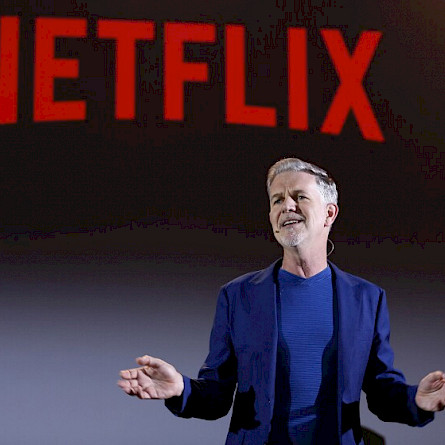It is a very interesting and enriching book about the culture of a company, more precisely that of Netflix, which is centred on the autonomy of employees and the elimination of most of the corporate rules which, with time and growing size of companies, drift towards bureaucracy.
However, it is a passage from the beginning of the book that I wanted to talk to you about today. This passage made me realize how much conditions have changed over the past few months for many companies and how much they resemble the context following the bursting of the tech bubble of the early 2000s. So here is what Reed Hastings wrote in the section where he tells the story of Netflix:
“Then, in the spring of 2001, crisis struck. The first internet bubble burst, and scores of dotcoms failed and vanished. All venture capital funding stopped, and we were suddenly unable to raise the additional funds we needed to run the business, which was far from profitable. Morale in the office was low, and it was about to get lower. We had to lay off a third of our workforce.”
I’ve often said that the last few years have been uncannily like the late 1990s and the tech bubble. Although recent excesses have probably been more widespread than 20 years ago, they seem to me all of the same ilk: excessive valuations for companies with precarious business models, easy and inexpensive access to abundant capital, enthusiasm for “day-trading” and excessive appetite for risk and for all the ways to make a profit fast.
Given the recent fall in equity markets, more specifically in technology stocks (the Nasdaq index, largely made up of technology companies, had recently lost 35% of its value from its recent peak) and the marked rise in interest rates, we could well see fallout similar to that of the early 2000s.
In my opinion, like Netflix in 2001, today’s loss-making companies whose business model is primarily aimed at revenue growth without too much regard to profitability have difficult choices to make. There is a legion of loss-making companies! How many companies that have launched on the stock market in the last few years are still losing money? These companies regularly need capital to finance their activities, but the stock markets are suddenly much less accessible (it is difficult for executives to justify issuing shares when their stock has lost 50% of its value). In addition, if debt is still accessible, it costs much more than a few months ago and the banks are much more cautious.
In such companies, I believe there will be a frantic race towards profitability – it is a question of survival. The catch is that it’s not that simple to change a company’s focus from revenue growth at all costs to making a profit. Barring a sudden turnaround in the markets over the next few months, I anticipate massive layoffs and a marked decrease in spending at such companies. The process may have already begun. In the early 2000s, Netflix managed to get through the crisis by quickly adjusting its business model. How many companies can be so agile today?
Take note this blog is my last until the beginning of September. Starting next week, my colleague, Jean-Philippe Legault, will take over. Thank you all for your interest and have a nice summer!





